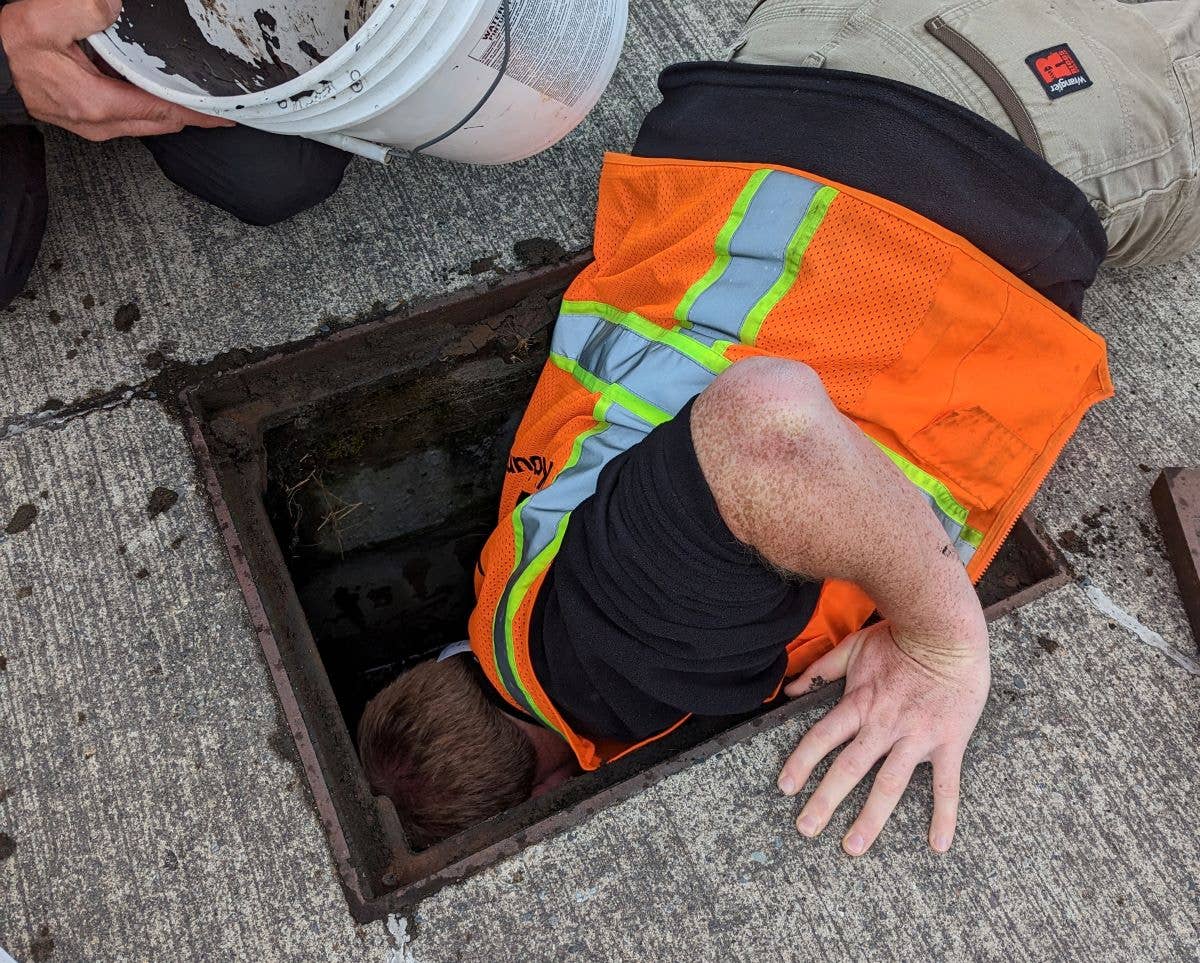Airport’s Drain Rescue Story for the Birds
Not all heroes wear capes. Sometimes, it’s an orange safety vest.

[Courtesy: King County International Airport-Boeing Field]
Some aviators need more help than others, especially when they are fledglings.
The operations staff at King County International Airport Boeing Field (KBFI) in Seattle came to the rescue—quite literally—of four ducklings trapped in a storm drain on the Nordstrom ramp.
According to airport spokesperson Cameron Satterfield, last month airport officials were alerted to the situation when someone from Nordstrom noticed the mother duck in an unauthorized holding pattern, marching around the storm drain while four other ducklings were off to the side under a bush.
"Airport operations were called because the person feared some of the ducklings had fallen into the drain," Satterfield said.
Airport operations staff removed the drain cover and used a 5-gallon bucket to scoop up two of the ducklings that were swimming in the drain. Two others departed the drain without a clearance, heading to another drain via a connecting pipe. The runaway pair were located, scooped up, and returned to the custody of their mother. The family of nine reportedly left the property under their own power and have not been seen since.
Wayward avians are not unusual at KBFI, according to Satterfield, as the airport is located between the Duwamish Waterway on the west and freeway with a greenbelt on the east. It is not uncommon for hawks, crows, starlings, and seagulls to visit. However, this was the first duck encounter in recent history.
"We're keeping an eye on the area where they came through and checking the fencing to make sure they don't come back," said Satterfield. "We haven't seen them lately, [so] we're hopeful they relocated to a better habitat."
Wildlife near airports can turn into an expensive ordeal for GA pilots. The FAA says the number of wildlife strikes reported annually has increased steadily from about 1,800 in 1990 to 16,000 in 2018, racking up a collective maintenance bill of around $870 million. Piston aircraft operators primarily operating out of general aviation airports face the highest probability of strikes and, therefore, the brunt of the fees.

Subscribe to Our Newsletter
Get the latest FLYING stories delivered directly to your inbox






